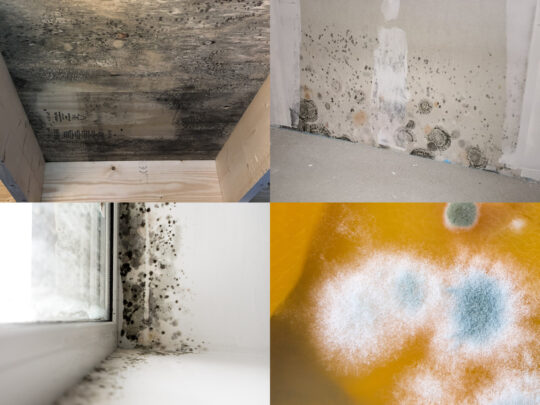Many Danish buildings and homes are sick with mould
The state's building research institute estimates that, seen over a period of five years, every third building in Denmark will have had water damage, which can lead to the growth of mould. The vast majority of cases are minor and can be resolved with a simple drying of the damage. Unfortunately, late remediation/drying out can mean extensive damage to the building and this can have both financial and human costs.
Nationally, it is estimated that more than every 10th rental property is affected by mold, and the Lung and Allergy Clinic in Copenhagen estimates that 300,000 Danes are ill because of mold in their homes.
New methods and materials with built-in mold attack
Mold damage is not only a problem that occurs in old, poorly maintained buildings and homes, but also occurs in new construction. There are several factors that lead to mold damage: the general state of maintenance of the buildings, poor living habits, too little ventilation, too little heat in the home, but also incorrect use of building materials, bad or even unsuitable building materials and, last but not least, construction errors.
Mold attack in roof plywood and wind barrier boards is a growing problem. Even if the ventilation in the roof space is carried out correctly according to current regulations, mold will get on the roof plywood in these constructions. Plastering on insulation often leads to water ingress at windows and roof edges, and thus creates a breeding ground for mould, especially if the insulation is done on a moisture-sensitive rear wall.
EPS or foam concrete floors often cause moisture damage to adjacent floors, roofs and walls and thus provide a breeding ground for mould. Nevertheless, the use of EPS concrete is widespread and there are currently no official instructions or guidelines in the field, although proper mixing and use of the EPS concrete would prevent most of these injuries.
The expected growth in sustainable construction may well result in a corresponding increase in the number of mold damage. Sustainable construction increasingly relies on the use of natural materials (eg wood and green roofs) and recycled materials that are not recertified. Therefore, both the weather resistance and the remaining life are unknown.
This means that with the new materials and methods, a large risk of mold will be built into new construction and renovations that use them.
Prevention and remediation of mold damage
Protox's products are designed to combat and prevent molds in the indoor climate without leaving unwanted residual chemicals and are tested indoor climate neutral. Protox Mold is designed for the prevention of molds and Protox Hysan has earned a position as the professional's preferred choice when it comes to mold and odor remediation in Danish homes and buildings.

For example, the right way to prevent mold in plywood is to treat the underside of the roof plywood Protox Aquagrund2 before installation. In case of mold growth, cleaning is included Protox Hysan an option, but it is much easier and cheaper to pre-build than to renovate and renovate.
Protox can help remediation companies and others prepare for a future with growing numbers of mold infestations in our homes and buildings. Protox also offers expert assistance and employee training in combating and preventing mold attacks.


